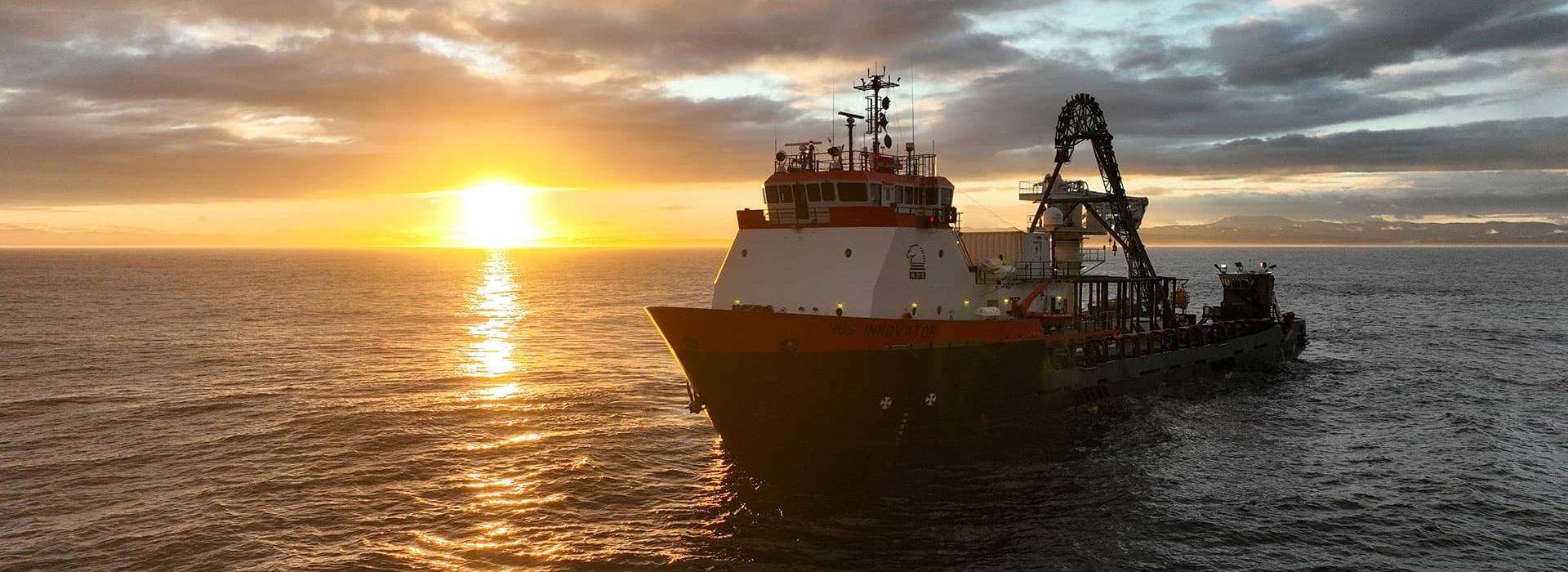
Are you reflecting on the kind of year 2024 was for you, and planning for the year ahead? Here in CEOAS, we are, too. Our 2024 was filled with exploration and innovation, solving problems and making connections that will help forge a better future.
Our 2024 is summed up by the spotlights shined on CEOAS science by the media. Here are the top ten times CEOAS made the news in 2024.
- Harnessing the power of the sea: PacWave, the first grid-connected wave energy test site in the U.S., moved forward by leaps and bounds this year.
This seaside town will power thousands of homes with waves (11/19/2024 Washington Post)
Scientists Are on the Cusp of Unleashing the Power of the World’s Largest Battery (08/26/2024 Popular Mechanics)Image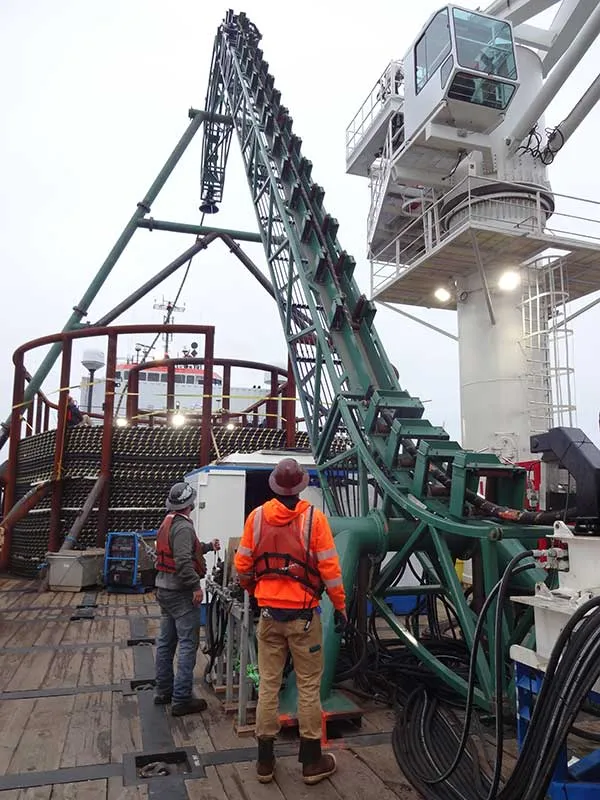
Laying cable at the PacWave site. Photo: Dan Hellin - Linking lead to telecom cables: Alyssa Shiel was puzzled by the high levels of lead she was finding in moss collected in urban neighborhoods. Then she looked up.
Old lead-sheathed telecom cables found in nearly half of Portland neighborhoods so far; health risks unclear (11/30/2024 The Oregonian)
- Eyes on regional climate: It’s hard to ignore that weather is getting weirder on the West Coast. Here are two of the many reports our scientists contributed to about what our changing climate means for our region.
'Out of the norm': Experts urge caution after deadly heat wave scorches West Coast (07/09/2024 USA Today)
What this winter weather can tell us about Oregon’s climate and vice versa (01/20/2024 OPB) - Tipping point: CEOAS’s Christo Buizert and colleagues used ice cores from Greenland to examine the factors that led to the planet’s last ice age. Are we close?
Climate “tipping points” found from last ice age (10/23/2024 Cosmos)
Image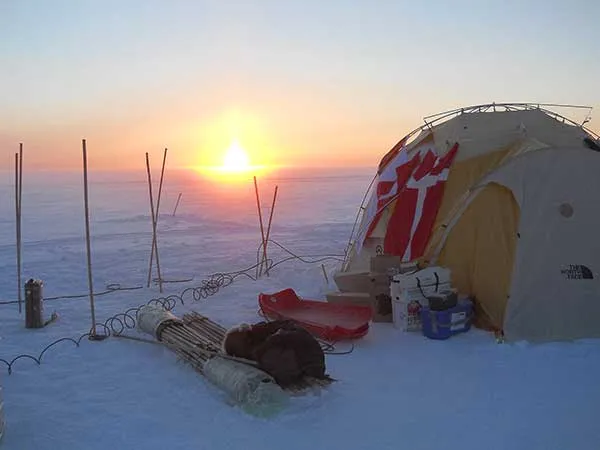
The Renland Ice core drilling camp at sunset. Photo: Sune Olander Rasmussen - Increasing resilience of coastal communities: The CEOAS-based Oregon Coastal Futures Project helps those living “on the edge” at the Oregon Coast prepare for natural hazards. This year, the project was recognized with a prestigious award.
OSU Oregon Coastal Futures Project recognized (08/28/2024 The World) - Protecting our electrical infrastructure: A project to map the electrical properties of the Earth’s crust across the whole continental U.S. is helping to find ways to protect the grid.
OSU research project maps electromagnetic energy across the US (08/28/2024 KGW)Image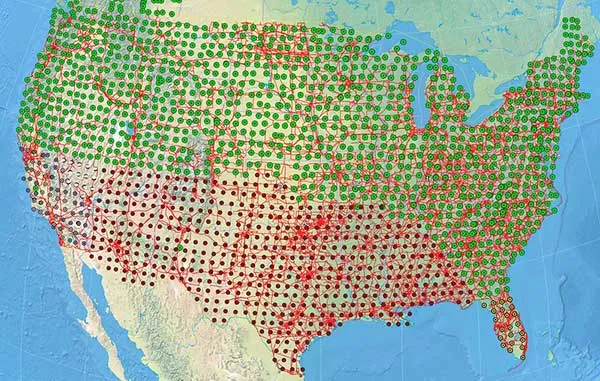
Map of locations where researchers are collecting data to measure the Earth's electrical currents. Green dots represent locations that were mapped under National Science Foundation support; multicolored sites in California and Nevada were completed with NASA support; and red dots are sites to be completed by OSU through a new cooperative agreement with the U.S. Geological Survey. Map courtesy of Adam Schultz, OSU - A unique approach to looking at past climate: Katy Wendt heads underground – into Oregon Caves National Monument -- to learn about connections between past climates and wildfire.
What ancient stalagmites can tell us about life on a hotter Earth (12/04/2024 NewScientist) - Ship construction makes major progress: OSU is building the newest ships for science, and major progress was made this year on all three vessels under construction in Louisiana.
Scientists want to do more research on the Gulf of Mexico. This new ship should help (03/27/2024 WWNO)Image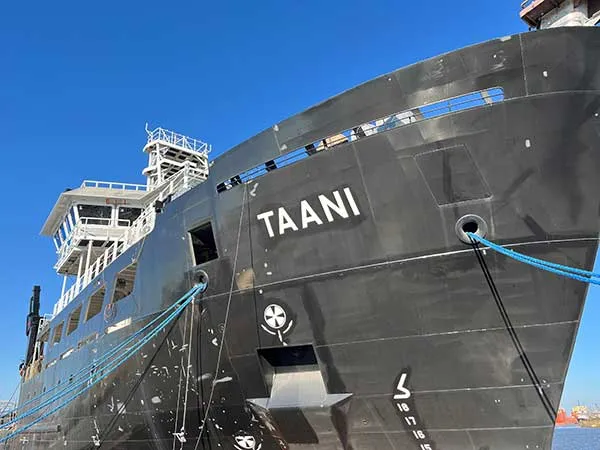
R/V Taani under construction in Louisiana. Photo: Nancy Steinberg - Satellite studies of disaster zones: Geographer Jamon Van Den Hoek provided many major media outlets maps of the tremendous destruction in both Ukraine and Gaza this year.
What Ukraine has lost (06/03/2024 New York Times)
In Gaza, Satellites Show 157,200 Damaged or Destroyed Buildings (03/13/2024 Undark) - Fishing for data: CEOAS is working with commercial crabbers on the Oregon coast to refine and deploy sensors on crab pots to measure oxygen concentration in the ocean, providing critical information for both scientists and the fishing industry.
Oregon State Working to Refine Ocean Oxygen Monitoring Sensors in Fisheries (03/26/2024 Fishermen's News)Image
Dungeness crab. Photo: Oregon Sea Grant
We’re looking forward to another year of finding solutions and exploring our world in 2025. Thanks for following along with us, and Happy New Year!